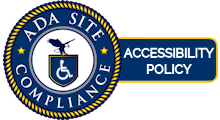 With 2024 drawing to a close, some employed Americans are concerned their jobs have negatively impacted their wellbeing, especially over the past year. In fact, new survey data from The Harris Poll on behalf of Yoh uncovered that nearly one in three employed Americans experienced job burnout at least once in 2024. Even more concerning is that nearly half of respondents reported experiencing at least one or more contributors to burnout without reporting burnout specifically, indicating that they might have burnout but not even be aware of it.
With 2024 drawing to a close, some employed Americans are concerned their jobs have negatively impacted their wellbeing, especially over the past year. In fact, new survey data from The Harris Poll on behalf of Yoh uncovered that nearly one in three employed Americans experienced job burnout at least once in 2024. Even more concerning is that nearly half of respondents reported experiencing at least one or more contributors to burnout without reporting burnout specifically, indicating that they might have burnout but not even be aware of it.
What’s contributing to employee burnout?
Burnout is defined by the World Health Organization as a syndrome resulting from unmanaged chronic workplace stress. There are many factors that can contribute to workplace stress and potentially result in burnout. The survey revealed which contributors are most prevalent among employed Americans:
- Personal life sacrifices: 34% said they felt the need to set aside things like exercise, hobbies and taking care of their home for the sake of their professional responsibilities.
- Overstretched bandwidth: 31% said they were required to add more on their plates without decreasing their existing workload.
- PTO guilt: 27% said they felt as if they couldn’t take time off from work despite wanting to.
The survey results also depict a variation in burnout experiences across generations, with Baby Boomer and Gen X workers being less likely to report experiencing burnout or a burnout contributor compared to Millennials and Gen Z.
Here are more findings collected from Yoh’s Harris Poll survey.

Employers can help stave off burnout
With only 22% of employed Americans neither saying they’re burnt out nor listing any other contributor, employers cannot ignore the effects of workplace stress on their employees heading into 2025. When stress escalates to burnout, it can directly impact employee productivity, satisfaction and success.
“To protect against employee apathy and unwanted turnover, it’s critical for leaders to pursue policies that prioritize workplace wellness,” said Emmett McGrath, President of Yoh. “For those looking to hire, having an understanding of the common pain points and stressors burdening workers can provide a leg up on the competition for talent. By proactively and explicitly addressing issues such as work-life balance, time-off benefits, work-from-home policies and other support resources throughout the hiring process, organizations can position themselves as sensitive to the needs of employees and committed to their wellbeing.”


